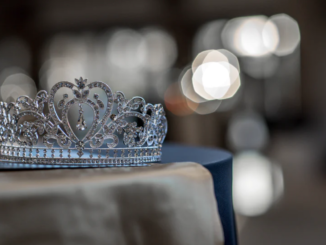
By Kiley Garette
“The Legend of Korra” debuted on April 14, 2012 as the successor to “Avatar: The Last Airbender”, and Nickelodeon aired 52 episodes before choosing to end the show. The series finale aired on Dec. 19, 2014 and since then fans of the original series can’t seem to agree on whether “the Legend of Korra” paled in comparison. While both sides have solid arguments, it’s hard to ignore the idea that “Avatar: The Last Airbender” and its sequel series both have their own strengths and weaknesses that make them a balanced couple.
For anyone unfamiliar with the story of “Avatar: The Last Airbender,” it’s a television show that follows a boy named Aang, a 12-year-old airbending master who is the only person in the world who is able to use and master the four elements: water, earth, fire and air. Aang is broken out of an iceberg near the south pole by two siblings, Katara and Sokka, from the Southern Water Tribe, a small group of villages in the south pole that had been all but wiped out during the hundred-year war, which Aang, as the Avatar, must stop. To do so he has to master the other three elements before Sozin’s Comet arrives in less than six months. Through the three seasons, Aang, Katara and Sokka, travel the world eventually joined by a blind earthbender, Toph, and the disgraced Fire Prince, Zuko. They spend their time evading capture from the Fire Nation, training Aang to be an avatar and trying to find a way to stop the war.
One of the biggest downfalls of the “Legend of Korra” was ultimately the main characters. “Even Korra, the Avatar herself, has development issues. She begins the show extremely headstrong, using violence as a first resort to solve problems. This is in contrast to Aang’s gentle and playful manner, so it was a great starting point,” Mythcreants.com writer, Oren Ashkenazi, said in an article in 2014. “Unfortunately, Korra never really moves past it. Over and over again she makes foolhardy decisions that should get her in trouble, but by pure luck she turns out to be right.”
While Korra does have the complete opposite personality to Aang, there’s no doubt that her personality didn’t develop much until the end of the third season; she remained stubborn, never really learning from her mistakes. After season three, however, there is a small personality shift for Korra, but her old tendencies pre-season three finale did pop up occasionally in the fourth season, especially towards the end.
The real beauty of the “Legend of Korra,” and the thing that set it aside most, was its antagonists. In “Avatar: The Last Airbender,” there were minor villains and major villains, but overall, they had no drive behind them. The only remotely complex antagonist in the series was Zuko, but even he could be written off as his story coincides with Aang’s. In a way, Zuko is as much of a protagonist as Aang, even when he is seen as a villain. The biggest villain of the series was Fire Lord Ozai, Zuko’s father, but he was flat and one-minded. He wanted world domination because his father had wanted it and his father before him; he didn’t change, he had no development, and he was simply the elephant in the room for most of the series.
Unlike “Avatar: The Last Airbender,” the “Legend of Korra” had complex antagonists that weren’t just evil for evils sake, like Fire Lord Ozai. In season one, Amon was the main antagonist. He suffered childhood trauma at the hands of his father, being forced to bloodbend his own brother so that one day he would avenge him for Aang taking his bending away. Amon thought that by ridding the world of benders, including the Avatar, the world would be better off, because there wouldn’t be such a large power struggle between those who could use the elements to their advantage and those that could not.
In season two, Tonraq, Korra’s uncle, snuck into the role of antagonist, wanting to connect the mortal world and the spirit realm once again. He was driven mad by the spiritst, though it’s not clear whether he had been mad all along or whether it was communicating with the dark spirit Vaatu that send him over the edge.
In season three, which is the season that motivated the change for Korra’s character arc and solidified the shows standing as a show better suited for older audiences, the antagonist is the Red Lotus Society, led by once non-bender turned airbender Zaheer. While the Order of the White Lotus was focused on keeping the Avatar safe, the Red Lotus Society believed that the only way the world would achieve true peace would be if every government and authority figure were to fall. “Together, we will forge a world without Kings and Queens- without borders or nations. Where Man’s only allegiance is to himself, and those he loves. We will return to the true balance… of natural order,” Zaheer said in season three episode 13 Venom of the Red Lotus.
None of these antagonists are purely evil; each one of the the villains in “Legend of Korra” truly believe what they are doing is best for the world. That is one of the reasons that the “Legend of Korra” and “Avatar: The Last Airbender” are perfect together. Korra had mediocre protagonists but deals with much more mature themes that “Avatar” didn’t and had antagonists that stood up to it. “Avatar” didn’t deal with Post Traumatic Stress Disorder, something prevalent in the last season of the “Legend of Korra” she didn’t deal with the realities of war like Avatar did.
The shows are each other’s FOILs, what one doesn’t address the other does. They highlight each-others qualities. “The Legend of Korra” grew to more mature content because its audience were no longer kids, they were older teenagers who had grown up with “Avatar” and were going through a whole new set of challenges and realizing that the world isn’t as one sided as it was when they were children, or like it was in “Avatar.” Unfortunately, the character development suffered a bit, but that doesn’t mean that “the Legend of Korra” is inherently better or worse that “Avatar: The Last Airbender.”


